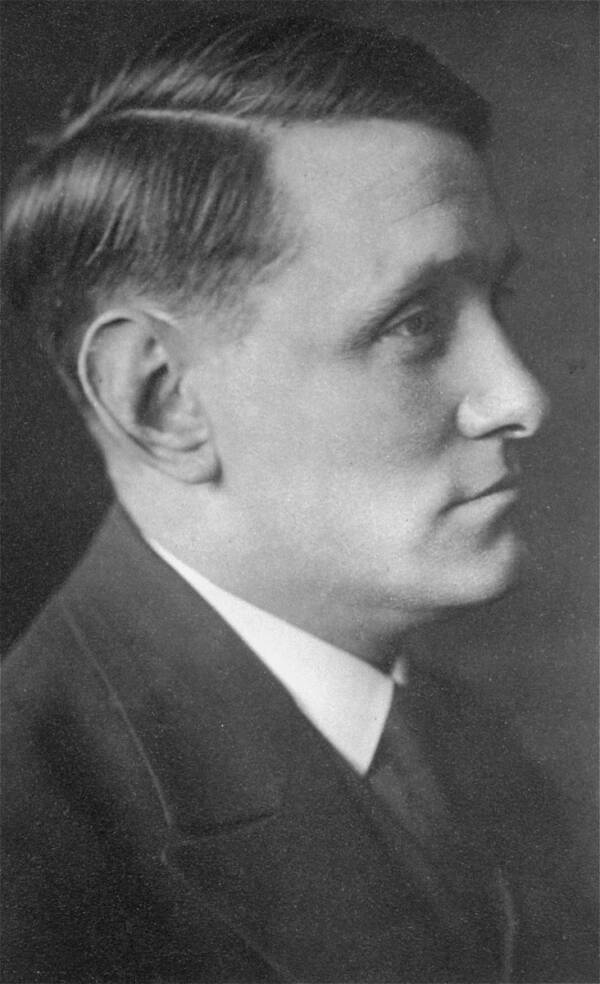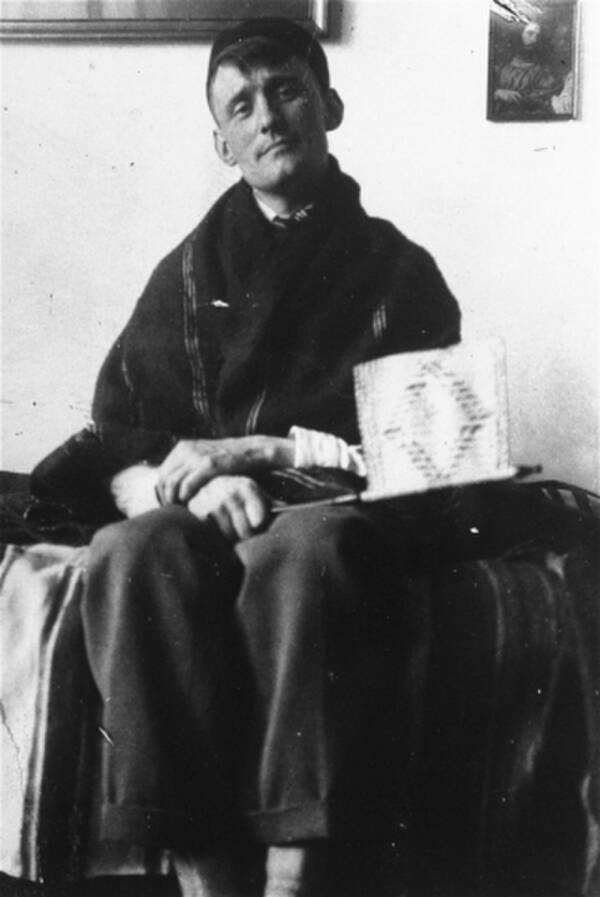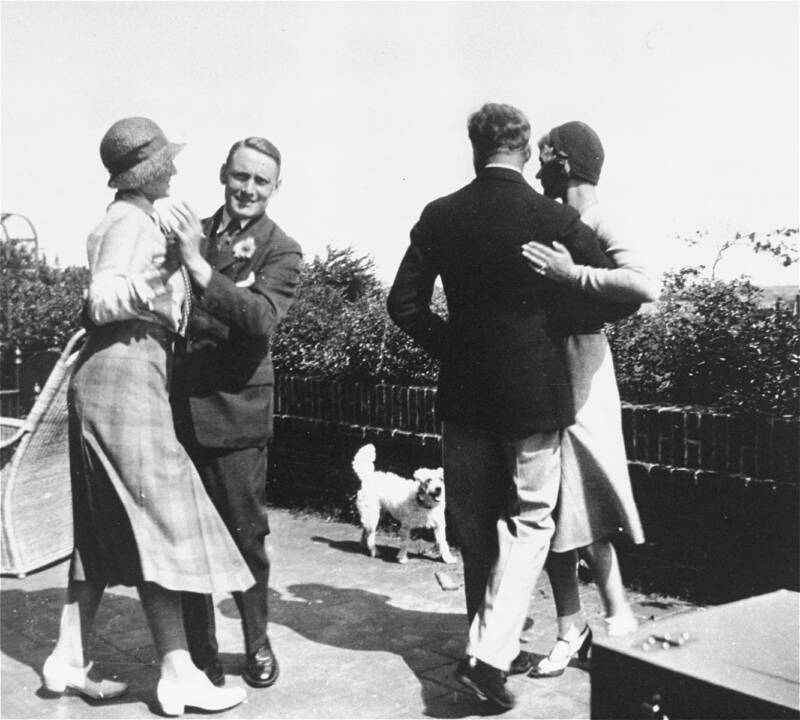During the Holocaust, Willem Arondeus heroically led a raid to destroy a registry office in Amsterdam to prevent the Nazis from identifying Jewish citizens — and it cost him his life.

Marco Entrop/United States Holocaust Memorial MuseumWillem Arondeus was a talented artist who became a member of the Dutch resistance.
When the Nazis invaded the Netherlands in May 1940, some Dutch people believed it would be better to give in than to fight. But Willem Arondeus, an openly gay man, had no illusions about what the Nazi occupation would mean for people like him. Shortly after the German forces arrived, Arondeus signed up for the Dutch resistance.
A talented artist, Arondeus’ skills with a pen were quickly put to good use. He and his fellow resistance fighters helped forge identity papers that could mean life or death for Dutch Jews. But they didn’t stop there.
Well aware that the Nazis had access to records offices that held information on Dutch citizens — which they could use to check against the forged identity papers — Arondeus and his comrades decided to blow one up. In March 1943, they executed an audacious plan to destroy the Citizen Registration Building in Amsterdam.
Tragically, their victory was short-lived. Arondeus and the others were swiftly arrested, tried, and, executed. And in the years that followed, Arondeus’ legacy as a gay revolutionary was nearly lost to time.
The Early Life Of A Young Dutch Artist
Born on Aug. 22, 1894, Willem Arondeus grew up in a large family in Amsterdam. His parents were both theater costume designers and encouraged the creativity of Arondeus and his five siblings. But Arondeus’ relationship with his family deteriorated when he came out as gay at the age of 17. Unsupported at home, he decided to move out.
As the United States Holocaust Memorial Museum (USHMM) reports, Arondeus became an artist and a writer and was even hired to paint a mural for the Rotterdam town hall in the 1920s. Though far from wealthy, Arondeus nevertheless carved out a happy existence for himself.

Sepia Times/Universal Images Group via Getty ImagesAn example of Willem Arondeus’ artistic style, c. 1929.
He found both financial and romantic success in the 1930s, meeting his partner, Jan Tijssen, and publishing a book about Dutch painter Matthijs Maris. But these peaceful days were short-lived. Elsewhere in Europe, the Nazis were on the march. On May 10, 1940, they invaded the Netherlands.
Though some Dutch people uneasily accepted the Nazi occupation, Willem Arondeus understood the threat that he and other minorities faced — especially when the Nazis re-criminalized homosexuality, which had been legal in the Netherlands since 1811.
Arondeus picked up his paintbrush, but his days of mural painting were over. Instead, he’d lend his artistic talent to the nascent Dutch resistance.
Willem Arondeus And His Role In The Dutch Resistance

Toni Boumans/United States Holocaust Memorial MuseumWillem Arondeus c. 1921. Though he found some success as an artist, he put aside his creative ambitions to fight the Nazis in the 1940s.
Alongside other like-minded resistance fighters, Willem Arondeus set out to fight back against the Nazis. As the San Francisco Bay Times reports, they initially focused their efforts on producing underground publications, urging their fellow citizens to resist the Nazi occupation of the Netherlands.
Before long, however, Arondeus and the others took on a more active role. Dutch people had always carried ID cards, but the Nazis demanded that Dutch Jews add a “J” to theirs. As the USHMM explains, Arondeus and others started to produce fake IDs so that Jews could hide their identities.
There was just one problem: The public records office in Amsterdam held millions of records that the Gestapo could check against the forged ID cards. So, Arondeus and the others decided to destroy it.
On March 27, 1943, Arondeus and 15 other men marched up to the Citizen Registration Building wearing fake uniforms that a friend of Arondeus, a gay tailor, had made. With Arondeus in the lead, the group of resistance fighters disabled the Nazi guards, planted their explosives, and fled as the office building burst into flames.
The Dutch resistance fighters not only succeeded in destroying 800,000 identity cards, but they also rendered thousands more almost entirely unreadable thanks to smoke and water damage. But their victory was short-lived.

Public DomainThe Citizen Registration Building following the March 1943 bombing.
A couple of days later, a traitor in the resistance fighters’ midst informed the Nazis that Willem Arondeus had been involved in the bombing. He was arrested and interrogated and, though Arondeus did not betray his collaborators, the Gestapo was able to find a list of his fellow resistance fighters’ names in one of Arondeus’ notebooks.
They arrested 14 of the resistance fighters, 12 of whom — including Arondeus — were found guilty. On July 1, 1943, the men were marched to an execution site where they faced down a firing squad without blindfolds. Arondeus died there alongside the others. He was just 48 years old.
But Willem Arondeus didn’t go silently. Shortly before his death, he relayed some of his final words to his lawyer: “Let it be known that homosexuals are not cowards.”
The Forgotten Legacy Of Willem Arondeus

Toni Boumans/United States Holocaust Memorial MuseumWillem Arondeus, left, dancing at a garden party in 1931.
After Willem Arondeus’ death, his story of courageous resistance against the Nazi occupation was largely swept under the rug. OZY reports that a heterosexual member of the Dutch resistance was credited with the bombing, even though Arondeus had led the charge.
Decades later, in the 1980s, the Dutch government finally awarded Arondeus a posthumous medal for his bravery. But Arondeus’ sexuality remained something of a taboo topic and didn’t appear in the history books until the 1990s. Only in recent years has he gotten his due as a gay resistance fighter.
And historians say he’s not the only one to have been overlooked by history.
“It is incredibly meaningful to have LGBTQ+ representation in the history of the Holocaust because for so long, really for too long, LGBTQ+ folks were written out of these histories — there was just a glaring absence where their stories should be,” Jake Newsome, an expert on the history of LGBTQ+ people during and after the Holocaust, told the USHMM.
Newsome added: “[W]hen they were mentioned at all, they were usually described as ‘deviants’ or ‘criminals’ or as ‘immoral’ people. But here we have examples of people, like… Willem, who were incredibly brave and complex, and thus beautifully human.”
Though his story is little-known today, Willem Arondeus left behind a powerful legacy as an openly gay man and resistance fighter. In battling the Nazis, he wanted to prove, as one of his collaborators later noted, “that you didn’t have to be a heterosexual person to be heroic.”
After reading about Willem Arondeus, see how other resistance fighters fought back against the Nazis during World War II. Or, discover the inspiring story of Corrie Ten Boom, the Dutch watchmaker who saved the lives of hundreds of Jews by hiding them in her family home.





